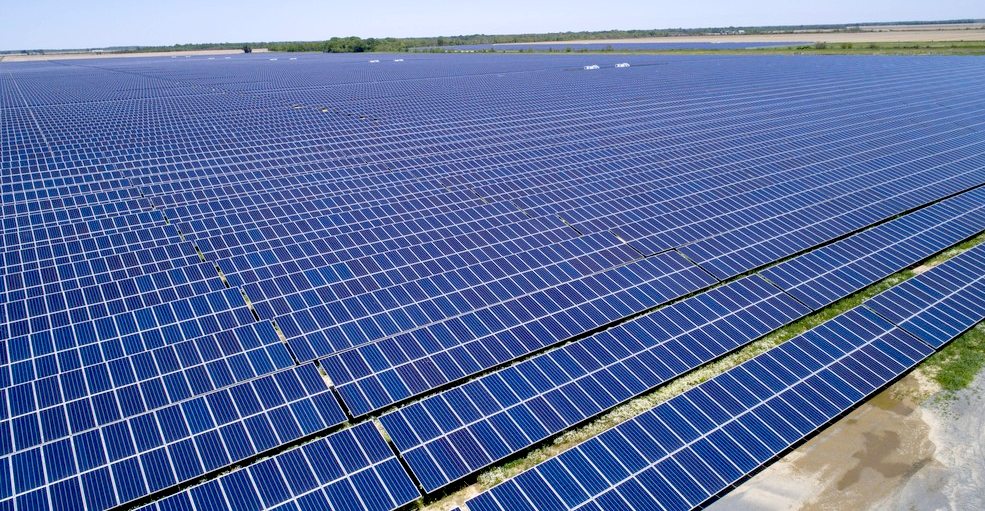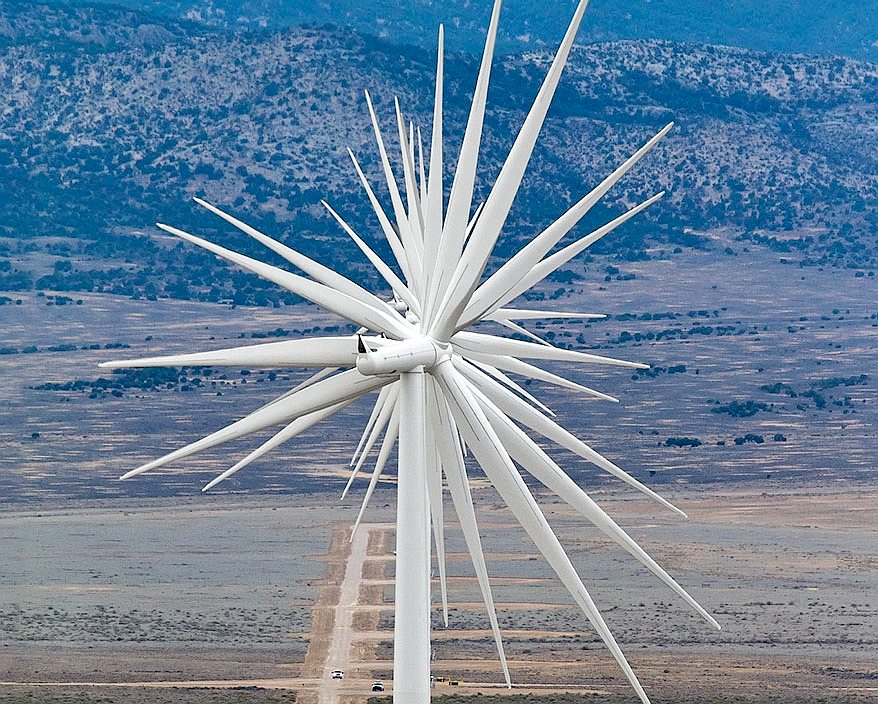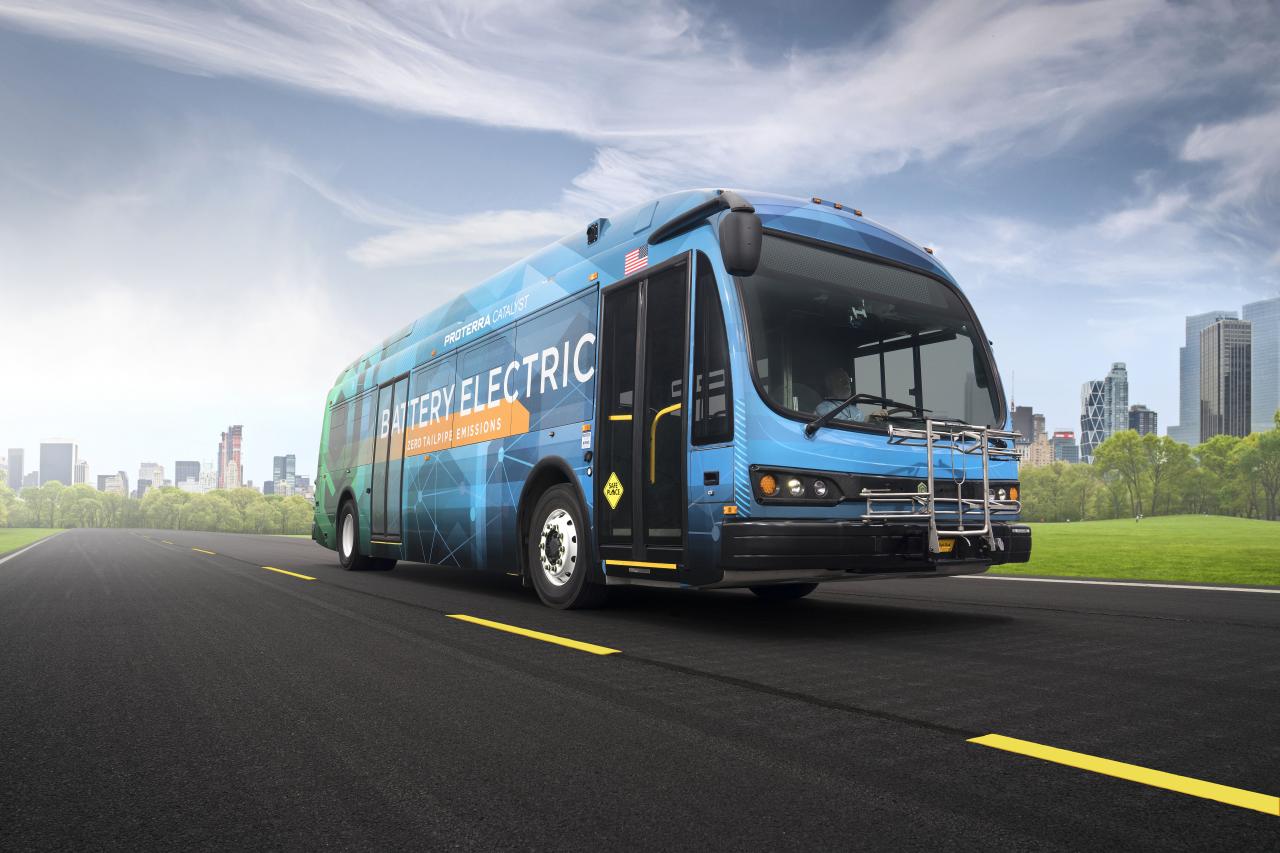|
E L E C T R I C I T Y
Please use our A-Z to navigate this site where page links may lead to other sites, or see HOME
|
|||
|
There is an abundance of clean, renewable, wind and solar energy that can produce green hydrogen and electricity to charge vehicle batteries, but there is no transport infrastructure to support rapid energy exchanges, independent of the privately owned grid in the UK.
Electricity is the most convenient way of transmitting clean, alternative energy, from the point of origin (conversion from natural harvesting) to the end user. We believe that low cost energy is a basic human right, that every generator and supplier should be working toward as a United Nations sustainable development goal. Failing which, a nationalized grid should be established, to seek to provide cheaper (even subsidized) energy in the event that energy equality may deprive poorer citizens of a reasonable quality of life.
There should be no limitation on private generators genuinely competing with one another, and there should be no monopoly situation concerning grid (supply network) infrastructure, such as may generate substantial profits for external (and overseas) industry investors, likely to cause hardship to residents in any nation. As in one external nation, sucking R&D funds from another.
Profits from any geographical region on planet earth must remain within that administrative area, to be re-invested in capacity, storage, and delivery.
Fortunately for humans, electricity is linked to magnetism, a force that can be harnessed to attract or repel, and convert a generated or stored potential difference (such as in batteries) from electrons traveling in a metal conductor, to rotational or linear movement.
This incredible property gives us electric motors and generators. We take it for granted, but it is a miracle of nature. We are living in the modern age of electricity. Where energy security is as yet, unsecured in April 2024.
ELECTRICITY & MAGNETISM - Youth project lead of the Elizabeth Swann project, presents a Series of educational videos explaining in brief how (probably) the world's fastest Zero Emission ship is propelled by electricity.
THE
GUARDIAN 9 APRIL 2024 - ENGLAND COULD PRODUCE 13 TIMES MORE RENEWABLE ENERGY, USING LESS THAN 3%
OF LAND - ANALYSIS
DAILY MIRROR 29 MARCH 2024 - UK RECORDS 'HIGHEST EVER SHARE OF ELECTRICITY GENERATIONS BY RENEWABLES'
At the same time, UK imports "increased significantly in 2022", DESNZ said, due to a boost in French
nuclear power output. As a result, less gas, which is the UK's main form of generation, was needed to meet the remaining electricity demand in the UK.
The Department for Energy Security and Net Zero (DESNZ) is a department of His Majesty's Government established on 7 February 2023 after a government reshuffle, the first by prime minister Rishi Sunak. The new department took on the energy policy responsibilities of the former Department for Business, Energy, and Industrial Strategy
(BEIS).
MOTORS
Electric motors are perhaps most important to modern society for transportation and mobility security. Up to now we have been reliant on steam and internal combustion engines (ICE) for our deliveries and trips to school and the supermarkets and for ships that transport goods from one country to another.
ICE engines convert petrol and diesel fuels into rotational movement via pistons and crankshafts using controlled detonations, that burn with compressed air to release carcinogenic exhaust fumes that also contain particulates. They are engineering marvels without any doubt, but they are also dangerous to life on earth where they cause global warming and lung cancer.
INSOLATION
With the amount of incoming solar radiation (insolation) that hits the world in one hour there is enough energy to power the world for one year. With the addition of solar panels all around the world reduces pressure and the need to produce more oil. Indeed, we would not need oil at all. Yeh baby!
The price of photovoltaic panels has been reducing as demand improved production methods and the efficiency is climbing, making them an attractive proposition for off-grid supplies for home use and for solar farms where electricity is produced commercially. We would suggest that every nation should be self-sufficient in the manufacture and supply of photovoltaic panels. No nation should be dependent on cheap imports that upset the balance of payments. This is a dangerous reliance that could lead to World War Three, as aggressors target weaker manufacturing nations, stockpiling cash for weapons and cheap loans, aimed at buying into other countries. By way of an economic takeover, that can be just as effective as a physical invasion with armed troops. China is the most aggressive country, using these tactics to assert their influence around the world. This is an overt act of war, that many obtuse governments appear to ignore, mesmerized by the prospect of profits over national security.
Evacuated tubes and other solar heat collectors and concentrators can provide significant quantities of heat for homes and factories. Again, these should be manufactured locally. Such as in Europe, for European nations. In the USA for North American states. In India for local Asian nations, etc.
The only deviation from these general rules might be where smaller countries may have a trade deal, aimed at defeating Chinese globalization and financial world domination. As one glaring example. Equally as dangerous as Russian (Imperialist) expansion into Europe, designed to destabilize NATO alliances. Russia and China being communist allies, with long term political agendas. And please note, these are not the views of the Climate Trust. These are generally held views, expounded by the media in most Democracies. China and Russia do not have free elections. They are dictatorships.
LONG
TERM SECURITY
We might also enter into international agreements to undermine fossil fuel energy trading monopolies and assure that everyone has the right to cheap and clean renewable energy, as per United Nations SDG 7.
ELECTRIC VEHICLES
If we want a practical EV infrastructure solution by 2050 starting within the next 10-15 years to meet the 2030 transition, to 2035 zero emission targets of most countries party to the Paris Accord, we need to make the most of electricity and our distribution networks for load levelling of renewable solar and wind generated electricity. But in the UK, other European countries, and in the USA, they are going backwards by doing nothing.
SWITCHES & BULBS - Where would we be without electric lighting. A battle royal ensued in the law courts and Thomas Edison and Joseph Swan slogged it out in the London High Court, ending with the combatants working together as the Edison & Swan United Electric Light Co.
ELECTRICITY POWER COMPANIES A - Z
Duke Energy Corporation, DUK, N. Carolina, USA Dominion Energy Inc., Richmond, Virginia Exelon Corporation EXC, Chicago, USA KEPCO Korean Electric Power Corporation National Electric Grid & Central Electricity Authority (India) National Energy Board (Canada) National Grid plc (formerly Central Electricity Generating Board UK) Next
Era Energy Inc. Florida, USA Southern Company, Atlanta, Alabama, Georgia, Mississippi, USA State Grid Corporation of China TEPCO Tokyo Electric Power Company
ENERGY DISTRIBUTION, GENERATION & STORAGE
If properly planned and operated, dispersed storage and generation may provide benefits to distribution systems by reducing capacity requirements, improving reliability, and reducing losses. Dispersed-storage-and-generation technologies include hydroelectric systems, diesel generators, wind-electric systems, solar-electric systems, batteries, storage space and water heaters, storage air conditioners, hydroelectric pumped storage, photovoltaics, and fuel cells.
As a result of the application of deregulation in the electric power sector, a new identity appeared in the electric power system map known as “Distributed Generation” (DG). Instead of using 100 MW to GW sized units located far from the loads, disbursed generation sites might be kW to MW scale - located closer to natural resources and local loads.
Distribution networks were initially designed as passive systems, which provided one-directional links between the transmission network and electricity end users. The introduction of DG is resulting in many distribution networks becoming energy harvesting systems, with much more variability and bidirectional power flows where there are high penetrations of DG.
Those who hold the power and wealth should consider re-investing in alternatives as they head towards the sustainable economics of zero growth.
Unfortunately, where SDG 7 of the United Nations' sustainability development goals, is to provide "clean affordable energy for all," electricity prices vary considerably from region to region based on local policies, profit ratios for shareholders, lack of investment in renewables, reliance on fossil fuels. And of course natural resources. The most important of all being hydro electricity for the fortunate few.
There is not a lot of point transitioning to renewables if we do not tackle the drastic price variations, due to policies and infrastructure deficiencies. We will have the same problems, just new taskmasters. We need new policies. So please write to your Councilors, Members of Parliament and other Heads of State. Petition, and if necessary, march for fair energy prices with policies to match. Be careful though in Russia, China, Iran, etc. Where there are no free elections, and dissent is rewarded with the Gulag, poisoning, or instant beheadings. Nations who abuse Human Rights, should not be able to compete in energy markets with those who uphold Human Rights. This includes imports and exports. These are the opinions of the writer, not necessarily those of the Foundation.
ENERGY
PRICES & ACCESS IN AFRICA
ELECTRICITY
PRICES IN EUROPE 8. Spain: €0.2890 per kWh (EU average price) 9. Germany: €0.4125 per kWh (average household price) 10. Romania: €0.4199 per kWh (average household price)
These prices do not include a sometimes exorbitant standing charges, in the UK being between £0.40 - 0.54 pence per day. It's a extra tax on low energy users, who pay more pro-rata.
PROFITEERING & MORALS
You may be asking why people should profit from energy and is that legal? Mostly, energy companies have shareholders who derive an income based on share dividends. Sometimes those energy companies would rather they grab a nice profit for themselves, rather than invest in renewables and infrastructure (storage), to make electricity cheaper for their customers. If this is happening in your region, it is because politicians are allowing it to continue. Whereas, policy changes, as statutory requirements - making it law, could force suppliers to invest first, with dividends later. Provided that a good level of investment has been made. Otherwise, suppliers, and of course the infrastructure network (in the UK Power Networks) should lose their franchise.
THE CASE FOR NATIONALIZATION
The alternative is nationalization, where there are no dividends or shareholders to leach off a captive market. Then, the matter of procurement fraud may rise to the surface as something to keep an eye open for. As in tender bids and transparent tendering. A State operated Grid, Power Storage, and State operated Power Stations, Solar and Wind Farms, would seem to be the only way that SDG7 might be complied with.
ELECTRIC BAKERY - The earliest surviving generating station, dating from C. 1900, with battery based load levelling as the core technology, coupled to a 110 volt DC generator, is in the little village of Herstmonceux, Sussex.
ELECTRICITY PRICES IN NORTH AMERICA
(USA)
These prices depend on factors such as supply, demand, infrastructure, and local
policies.
Here’s a breakdown of average total electricity costs by province based on a monthly consumption of 1,000 kWh:
As
you may imagine, if you are running a business that uses lots of energy.
Location is an important factor in remaining competitive. Industry could be
based near the Sahara desert, where massive solar installations make sense.
And yet, there is little by way of industrial activity. Africa, is thus a
blossoming energy market. Recognised in both the EGYPES
and ADIPEC
energy shows. With many other events concentrating on renewables like green hydrogen
and electrolyzers.
ELECTRICITY PRICES IN SUDAN
As of June 2023, the price of electricity in Sudan is remarkably low. Here are the details:
Again, these prices include all components of the electricity bill. Kyrgyzstan’s low electricity prices contribute to its energy affordability for both households and businesses. However, it’s essential to understand the context behind these prices.
Subsidies: Governments in these countries may provide subsidies to keep electricity prices affordable for citizens. These subsidies can help mitigate the cost of power generation.
Economic Factors: Economic conditions, currency exchange rates, and overall development levels influence energy prices. Lower costs of production and distribution can contribute to lower prices.
Historical Context: Historical energy policies and infrastructure investments play a role. For example, Kyrgyzstan has a long-standing tradition of hydropower development.
Let’s explore the historical electricity prices in the United Kingdom from 1994 to 2024. While I don’t have access to real-time data, I can provide information based on available historical records.
In September 2022, the United Kingdom experienced an all-time high in electricity prices, reaching
£580.55 GBP/MWh.
If you want to learn more, write to your MP, but watch an episode of 'Yes Minister' first to understand why you'll get little response. Other sources of information include the Office for National Statistics (ONS) provides data on electricity prices, where you may find historical data in their Electricity Price dataset. The ONS also tracks percentage changes over 12 months for electricity prices using the Retail Price Index (RPI). The latest data for February 2024 shows a decrease in electricity prices compared to the previous year. They deliberately do not provide information for previous years, to hide the facts.
The UK government periodically releases energy trends and price statistics. The Energy Trends and Prices statistical release for January 2024 provides detailed
information. Once again, as in 'Yes Minister' the almost total lack of
transparency is a way of protecting subsequent Government from having to
answer awkward questions.
CONVERSION MWH TO KWH
HERSTMONCEUX MUSEUM - Opening its doors to the public in 2024, the oldest surviving generating utility with local grid stabilisation features three full size electric vehicles and several solar powered model boats as part of a science and innovation hub.
The deployment of renewable energy technologies increases the diversity of electricity sources and contributes to the flexibility of an international infrastructure system and its resistance to central shocks, especially where off-grid installations are widely deployed, but can be grid connected.
It is likely to be that at some point in the future we will no longer need power stations that run on coal, oil or nuclear fuels. We will have dragged ourselves out of the fossil fuel cesspit and taken power generation from the fortunate few who profit from geological deposits, to the masses who only need a space to mount the harvesting medium for energy independence.
For
those countries whose reliance on imported gas is
a significant energy
security issue, renewable technologies can provide a
level playing field.
https://www.theguardian.com/environment/2024/apr/09/england-could-produce-13-times-more-renewable-energy-using-less-than-3-of-land-analysis https://www.theguardian.com/environment/2024/apr/09/england-could-produce-13-times-more-renewable-energy-using-less-than-3-of-land-analysis
According to the 2018 Forbes calculation of net market capitalization, assets, sales and profit as the utilities with the financial muscle to develop innovative zero emission transportation and renewable energy load levelling solutions:
KEPCO Korean Electric Power Corporation National Electric Grid & Central Electricity Authority (India) National Energy Board (Canada) National
Grid plc (formerly Central Electricity Generating
Board UK) State Grid Corporation of China TEPCO Tokyo Electric Power Company
Please use our A-Z INDEX to navigate this site
This website is provided on a free basis to promote zero emission transport from renewable energy in Europe and Internationally. Copyright © Universal Smart Batteries and Climate Change Trust 2024. Solar Studios, BN271RF, United Kingdom.
|






